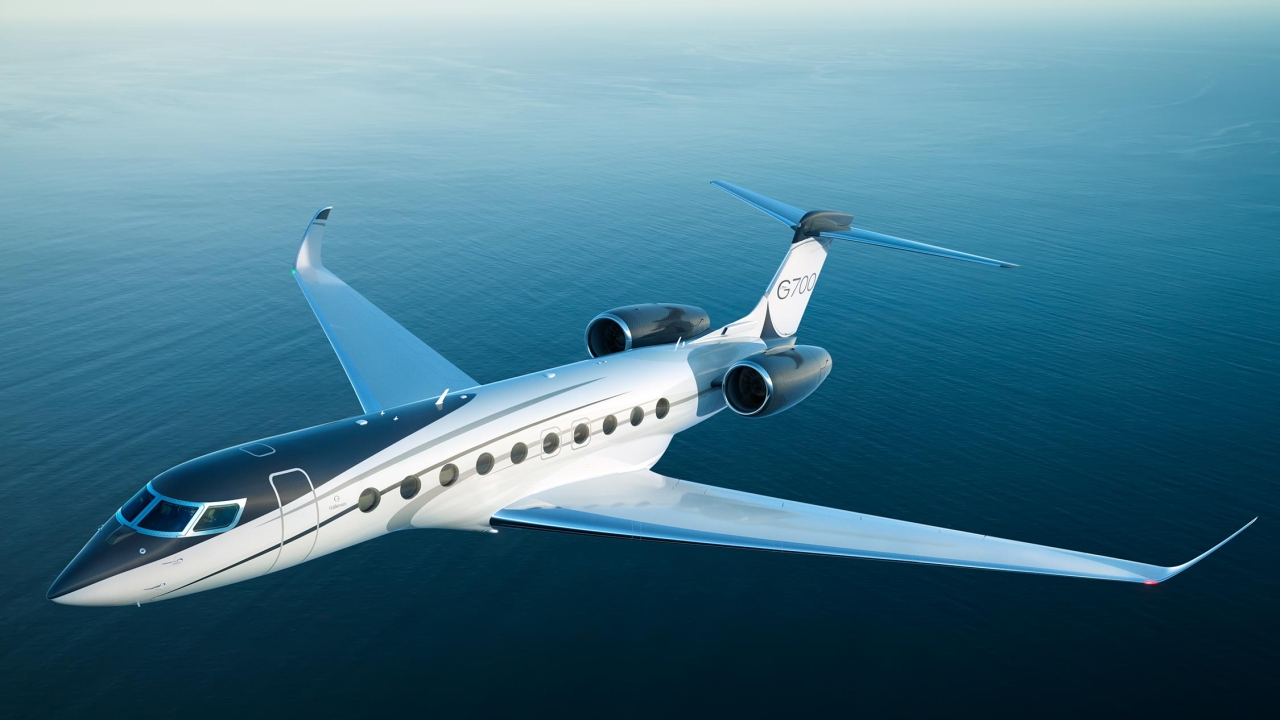Flight Fan-tastic?
The XTI Aircraft Company exhibited a one-third scale model of its planned TriFan 600 aircraft at the inaugural Kuwait Aviation Show in January 2018, as part of the company’s ambitious equity-based crowdsourced funding campaign. Jon Lake reports.

XTI chief executive, Robert LaBelle, estimates that “a conservative $375 million” will be needed to bring the TriFan 600 to market.
Certification and service entry is expected to take between five and seven years, following an 18-month research, development and test programme, which will initially use a two-thirds scale test aircraft.
This sub-scale prototype will be used to prove the aircraft’s innovative aerodynamic design and configuration, which uses a vertically mounted lift fan in the centre fuselage, in conjunction with two ‘vectoring’ ducted fans mounted in the wing leading edge.
The TriFan will use all three ducted fans pointing downward in order to take off vertically. The two wing fans will then rotate forward to give a seamless transition to forward flight and an initial climb.
The aircraft will reach its cruising speed within just 90 seconds, when the transition to fully wing-borne flight will be complete. It will then transition back to the hover before landing vertically on any clear helipad-sized paved surface.
The small prototype will also demonstrate and evaluate the TriFan 600’s ducted fan engines, testing their performance characteristics on take-off, in the hover and during the transition to horizontal flight.
Blade design and performance of the electric motors will come under particular scrutiny at this stage, before the company freezes the configuration of the full-scale production TriFan 600 design, which is planned to be a six-seater, accommodating a pilot, five passengers and ‘overnight bags’.
Denver, Colorado-based XTI claims that the TriFan 600 is the first vertical take-off and landing (VTOL) aircraft designed specifically for the business aviation market, offering true door-to-door travel with the speed, range and operational flexibility needed for true efficiency.
The company says that the TriFan 600 is designed to fly as fast, as high above the weather, and as far as conventional business jets, while being able to go to more places and with shorter travel times thanks to its VTOL capabilities.
Provisional performance figures released by XTI include a maximum cruising speed of 300 knots, a maximum cruising altitude of 29,000ft (a height that will be reached in 11 minutes) and a range of 1,200 nautical miles.
XTI began developing the TriFan 600 in 2013, with the aim of creating an aircraft with the speed of a business jet and the take-off and landing performance of a helicopter.
The aircraft was originally designed around a pair of 2,600shp Honeywell HTS900 twin-turboshaft engines. However, in early 2017, XTI decided to move to a hybrid-electric propulsion system with a turbine-driven generator, batteries and motor, in an effort to reduce weight and production costs. This new system is being developed by Bye Aerospace.
XTI has used a succession of exhibitions to show the TriFan 600 to investors, potential customers and the media. The first such appearance was at the Paris Air Show in June 2017, where it claimed to have secured an order for three aircraft from what it coyly described as a “globally recognised operator”. This, the company said, was a landmark order that validated the programme and gave potential operators “confidence that the aircraft was coming into being”.
The programme was officially launched at the National Business Aircraft Association trade show in Las Vegas in October 2017, where XTI announced that it had received “numerous additional orders”.
The following month, at the Fort Lauderdale International Boat Show, XTI announced that it had received more than 60 orders for the TriFan.
The Kuwait Aviation Show was, thus, the fourth major trade show appearance for the TriFan 600 in just seven months.
XTI has a heavyweight team of board members. Vice chairman Jeffrey Pino is the former president and chief executive of Sikorsky, while Charlie Johnson was president of Cessna. The board also includes chief engineer Dr Dennis Olcott, formerly chief engineer with Adam Aircraft and with the PiperJet programme.
Media and investor relations are the responsibility of Amelia Earhart, a prominent pilot and reporter for KUSA-TV in Denver, Colorado, and founder of the Fly With Amelia Foundation, which grants flying scholarships to 16-18-year-old girls.
Stay up to date
Subscribe to the free Times Aerospace newsletter and receive the latest content every week. We'll never share your email address.

